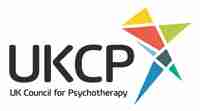Summary of “The Efficacy of Psychodynamic Psychotherapy”
For a good detailed discussion of the effectiveness of psychoanalytic psychotherapy, see the article by Jonathan Shedler “The Efficacy of Psychodynamic Psychotherapy” in American Psychology, 2010, vol. 65.
In this accessible article Shedler unpicks the myth that psychodynamic (therapies based on psychoanalytic concepts and methods) treatments lack evidential support. He collates a wealth of evidence that demonstrates the effectiveness of psychoanalytic psychotherapy. He also shows, from the evidence, that alternative approaches (such as Cognitive Behavioural Therapy, CBT) ‘may be effective in part because the more skilled practitioners utilize interventions that have long been central to psychodynamic theory and practice’.
The article sets out the key defining features of a psychoanalytic approach, largely in order to highlight the fact that the psychoanalytic methods differ from medication and treatments such as CBT in that they aim at more than symptom control. Through working to understand what the patient’s emotional experience has been, the key features of their real-world and psychic life and so on, a psychodynamic or psychoanalytic therapy aims at supporting insight, and fostering the positive presence of psychological capacities and resources.
Key points in the article include:
- Considerable robust research shows that psychodynamic therapy has effects that are long-lasting and continue to develop after the therapy has ended. By contrast research shows that the effects of other therapies tend to decay over time.
- Studies show psychodynamic therapy is effective for a wide range of presenting conditions.
- All psychotherapy and psychoanalytic psychotherapy tended to have a greater ‘effect size’ (the difference between treatment and control groups) than CBT and medication, though some differences in the nature of some of the study parameters have to be noted.
- Studies show that the mechanisms of change in cognitive therapy are not those presumed by its theory, but often are down to unacknowledged psychodynamic elements.
- Studies that have directly compared CBT with short-term psychodynamic therapy for depression have failed to show greater efficacy for CBT.
- The goals of psychodynamic therapy which extend beyond symptom control – towards fostering inner capacities and resources that allow people to live life with a greater sense of freedom – are often not assessed in studies.
- The ample research which exists and shows the effectiveness of psychodynamic therapy is not publicised, known about or is ignored.
Shedler concludes that: ‘the available evidence indicates that effect sizes for psychodynamic therapies are as large as those reported for other treatments that have been actively promoted as “empirically supported” and “evidence based”. It indicates that the (often unacknowledged) “active ingredients” of other therapies include techniques and processes that have long been core, centrally defining features of psychodynamic treatment. Finally, the evidence indicates that the benefits of psychodynamic treatment are long-lasting and not just transitory and appear to extend well beyond symptom remission. For many people, psychodynamic therapy may foster inner resources and capacities that allow richer, freer, and more fulfilling lives.
Anne Kane 2017

